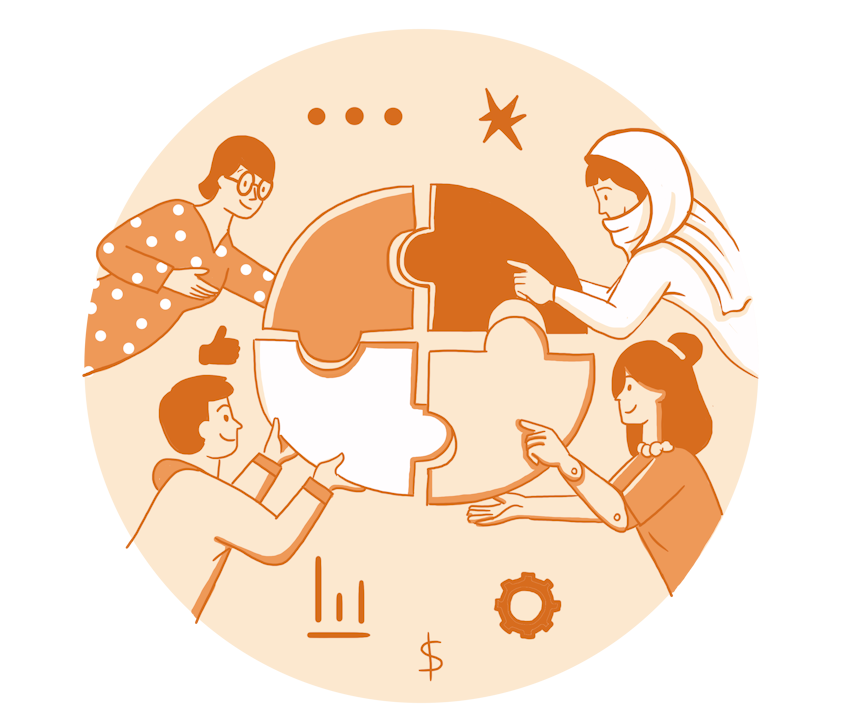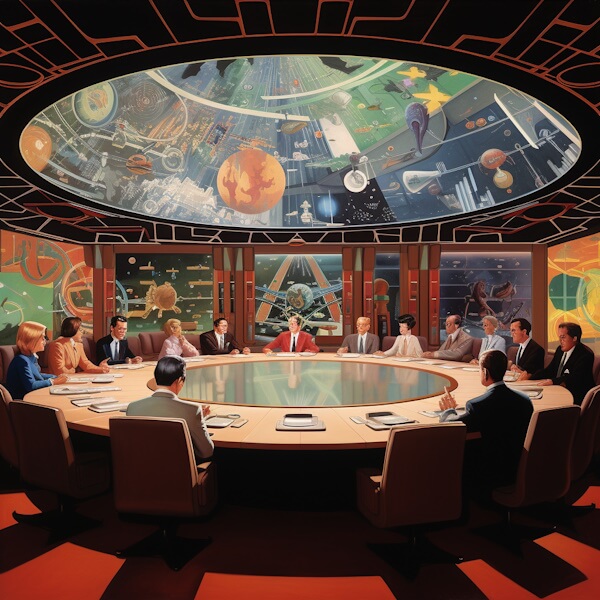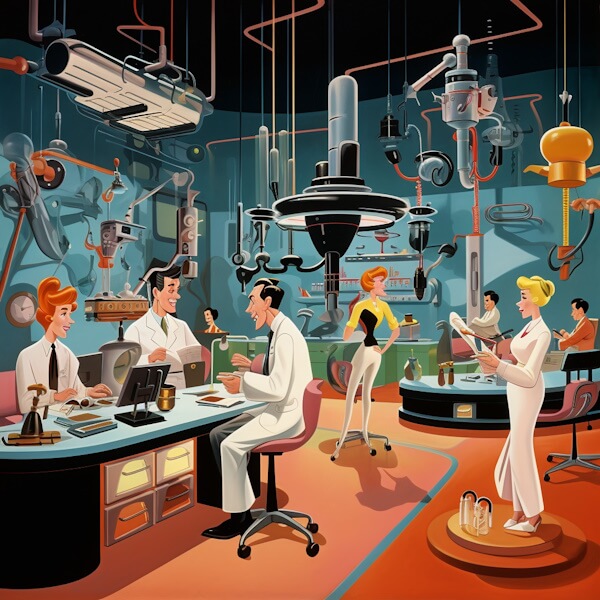
Innovation is a crucial element that separates thriving companies from those
struggling to stay afloat. However, what fuels innovation? The answer might
surprise you – ✨
diversity✨.
Innovation is the lifeblood of any prosperous company. Firms which cease to innovate are likely to stagnate and lose competitiveness. Whether developing new products, finding novel ways to improve service quality, or discovering more efficient methods to solve problems, innovation offers a direct route to growth above average profitability and specialists’ career path.
Even more critical, it paves the ground for companies to adapt to the constant shifts in new market dynamics, consumer preferences, and technology. Diversity is all about incorporating different perspectives, experiences, and game-changing ideas within an organization.
How can diversity drive innovation? Let’s find out!
What is a Diverse Workforce?
Diversity as a concept is popularly entrenched in our everyday dialogue. It is often brought to the foreground when discussing human resources, workplace inclusivity, and business strategies.
A diverse workforce comprises individuals of various backgrounds, perspectives, and experiences.
Explanation of Diversity
Traditionally, diversity is associated with distinctions in race, gender diversity, age, client’s ethnicity, or other demographic factors such as religion, nationality, and sexual orientation. However, this view tends to limit our understanding and appreciation of diversity.
Demographic distinctions in a genuinely diverse workforce come second to a broader dynamic: diversity of thought. It refers to the differing ways in which individuals process information and approach problems.
It is primarily shaped by our unique backgrounds, experiences, and perspectives - ways of perceiving the world that are influenced not only by our demographic identities but also by our socio-economic circumstances, education levels, political beliefs, and personal values, among other factors.
It’s essential to unleash value-driving insights.
Diversity Fuels Creativity and Innovation
Some new research demonstrates that contrasting viewpoints and ideas brought in by a diverse workforce are a valuable resource that fuels creativity and innovation. The amalgamation of varied perspectives and experiences enhances an organization’s ability to generate original ideas and expand its creative output.
Diversity drives innovation and innovation, a key enabler for business growth and competitive advantage inherently relies on developing novel ideas or improvements to existing products, services, or processes.
When employees from diverse backgrounds and experiences collaborate, it results in various views on approaching tasks and solving problems. That leads to the diverse voices and exploration of new ideas, the challenging of existing norms, and the fostering of a creative current within the organization.
As a result, companies with a diverse workforce often demonstrate higher levels of creative output and innovation. Furthermore, diversity signals an inclusive organizational culture that values every employee’s unique input, boosting employee engagement and motivation.
Enhanced Problem-Solving Through Diverse Teams
Experts suggest that diverse teams can provide a broader range of perspectives when identifying and providing solutions to complex problems. This power lies not just in their variance in culture, gender diversity, age, and socio-economic backgrounds but also in the diverse skill sets, experiences, and knowledge that they bring. But how does that work?
Imagine you’re attempting to solve a complex business problem. A one-sided team, while knowledgeable in their field, may have a narrow view of the problem, leading to limited solutions. Now, bring in a team with diverse backgrounds and perspectives, and an entirely new array of possible solutions unfolds. You’ve just experienced the power of diversity!
Numerous case studies provide tangible proof of the benefits of diverse teams.
In the tech industry, GitHub, a leading software development company, realized the strength of diverse teams in problem-solving. They fostered a diverse workforce that led to the development of innovative ideas catering to a broad range of users. They observed improvements in productivity, more comprehensive solutions, and increased end-user satisfaction.
In a completely different field, healthcare, a study showed that diverse patient care teams had a more comprehensive understanding of patient needs, which improved outcomes and patient satisfaction.
Diverse perspectives identify a broader perspective on problems and generate innovative potential and comprehensive solutions.
Challenging the Status Quo
How Does Diversity Encourage Questioning Established Norms and Processes?
Diversity is not just about race or gender. It’s about varying backgrounds, multiple voices, experiences, and world views, encouraging employees to question established norms and processes.
When people from unique backgrounds share a workspace, a multicultural exchange of ideas occurs. It allows them to see situations from other angles and challenges pre-established ideas.
Isn’t it fascinating how diversity can bring about changes in ways we didn’t anticipate? Consider an office where everyone holds the same beliefs. How likely is it that someone will present a fresh perspective?
Diversity unlocks innovation, reframes our thinking, and prompts us to look beyond conventional wisdom. By encouraging us to question the status quo, diversity catalyzes innovation.
Diversity Leading to Disruptive Innovation
Disruptive innovation often happens outside the box, where diversity thrives. That is where our preconceived notions are challenged, and unorthodox ideas manifest.
Are there instances where diversity has led to disruptive innovation? Absolutely! Think of the iPhone. Apple’s diverse team tailored an innovation that revolutionized the tech industry. The team comprised individuals with distinct expertise – a blend of engineers, designers, marketers, and others.
Although their backgrounds differed, they each contributed a unique perspective that led to the creation of an innovative, user-friendly product.
Increased Adaptability and Responsiveness
In an era where market dynamics evolve rapidly, responding effectively to these changes is vital for any business’s survival and growth. Diverse teams increase perspectives, allowing for a comprehensive understanding of trends and a toolkit of solutions tailored to various scenarios.
While a homogeneous team might be limited in acquaintance and approach, a diverse team can draw inspiration from different cultural and personal experiences to navigate the changing firm’s market share growth.
Companies like Google, Apple, and Microsoft are renowned for their progressive stance on diversity.
- Google explicitly emphasizes the importance of diversity in its hiring process and team composition. Thus, Google consistently develops products that resonate globally, making it a leader in technological innovation.
- Apple’s focus on diversity and inclusion is evident in their products, designed for everyone regardless of background, and this value is echoed internally with a 50% increase in the hiring of women, Hispanic, and Native American employees since 2014.
- Microsoft's commitment to diversity is reflected in its board of directors, where women and racial minorities hold a large percentage of seats. Microsoft’s cloud platform Azure, one of the leading cloud services, is a testament to the diverse team working behind it, addressing the needs of various industries and regions worldwide.
These examples underscore how fostering a diverse workforce can lead to innovation, improved problem-solving capabilities, and superior responsiveness to market growth and changes.
Creating an Inclusive Culture for Innovation
Let’s get acquainted with some strategies for creating an inclusive workplace environment that fosters innovation.
- Encouraging employees to implement feedback freely without fear aids in fostering a culture of inclusivity. Employees should feel comfortable sharing their opinions, irrespective of their position in the organization hierarchy.
- Clear policies and procedures that promote diversity and innovation should be established and implemented. That includes anti-discrimination policies, equal-opportunity hiring, and effective grievance procedures.
- An effective diversity and inclusion strategy involves comprehensive training and development programs. They should be designed to educate employees about unconscious bias, cultural competence, and the benefits of an inclusive innovation work environment.
- Diversity has to be represented at all levels within the company, including leadership skills and positions (to foster inclusion). Creating inclusive teams could involve hiring diverse talent or promoting employees from various backgrounds into leadership roles.
By the way, leadership plays a vital role in creating an inclusive environment and promoting diversity. Leaders should create a friendly working environment where employees feel free and know their uniqueness is valued and rewarded.
Also, they need to ensure that diversity and innovation are not just buzzwords but integral elements of the company’s mission, vision, and values.
Overcoming Challenges in Embracing Diversity
💪🏼 Potential Roadblocks and Biases in Diverse Teams
- Unconscious bias, or implicit bias, is one of the most pervasive challenges to diversity. These biases, deeply rooted in our experiences, culture, or upbringing, can influence our decisions and actions without our awareness, causing inadvertent favoritism or discrimination.
- Language barriers, differing communication styles, and interpretation disparities are significant hurdles in diverse teams. Such issues can cause miscommunication, misunderstandings, and friction among team members.
- Diverse teams bring together people from varied cultural backgrounds. Differences in work ethics, time management, and decision-making approaches can lead to misunderstandings and clashes.
💪🏼 Addressing Potential Roadblocks and Biases
- Conducting Bias Training. Strategies for countering unconscious bias start with raising awareness among individuals about their own biases. Regular bias training sessions can spotlight employees’ innate prejudices, allowing them to actively work towards overcoming them.
- Facilitating Better Communication. Investing in effective communication mechanisms goes a long way in overcoming associated challenges. Companies can initiate language training programs, give actionable feedback, create opportunities for team conversations, or employ collaborative tools to improve communication.
- Building Cultural Intelligence. An understanding and appreciation of co-workers’ cultures and backgrounds is vital to mitigate cultural misunderstandings. Companies can promote this through cross-cultural training and initiatives that celebrate diversity.
💪🏼 Maximizing the Potential of Diverse Teams
- Capitalizing on Each Member’s Strength. Each member of diverse teams brings unique skills, perspectives, and experiences for market growth. Knowing and leveraging these strengths can aid problem-solving, improve creativity and innovation, and boost team productivity.
- Facilitating Regular Team-Building Activities. Regular team-building activities help improve interpersonal relationships among team members and intensify efforts to reach goals. They foster a sense of unity, enhance understanding of each other’s work and communication styles, and reduce the chances of conflict.
- Promoting a Culture of Inclusion. An inclusive culture that respects and values differing viewpoints encourages at least one member to express their ideas freely. It leads to better decision-making, higher engagement, and improved job satisfaction.
Conclusion
Diversity is a defining characteristic of the 21st-century business world. More companies are realizing the potential of having a diverse workforce, making it a central aspect of their operational and strategic frameworks.
They clearly understand how diversity can drive innovation, especially today when Artificial Intelligence recruiting comes to the fore.
- Diversity can drive innovation, leading to business growth and sustainability.
- When individuals with varying backgrounds and experiences are encouraged to give actionable feedback, a richer understanding of issues and potential solutions emerge.
- Operating in a diverse and inclusive environment fosters a culture of acceptance and mutual respect.
Looking into the future, it’s clear the role of diversity in driving innovation will remain integral. The business landscape is evolving more quickly than ever before with rapid technological advances. Traditional concepts are being challenged, and new models of thinking are emerging.
Diversity unlocks innovation and will continue to shape this evolution by fostering innovative perspectives and solutions. Companies that choose greater diversity as a strength will have a competitive advantage in navigating this ever-changing landscape.
It’s a powerful force that drives innovation, fosters an optimistic company culture, and strengthens every business case. Companies that realize this will embrace diversity not out of necessity but as a vital part of their strategy to sustain and enhance their operations in the future.
Therefore, to stay aligned with the future, diversity must be seen as a catalyst for change, a driver to unlock innovation, and a cornerstone of company culture. Sign up for Playhunt, a platform for diversified candidate screening, and select the best talent not from your own biases but from the candidate’s required qualifications and skills.







